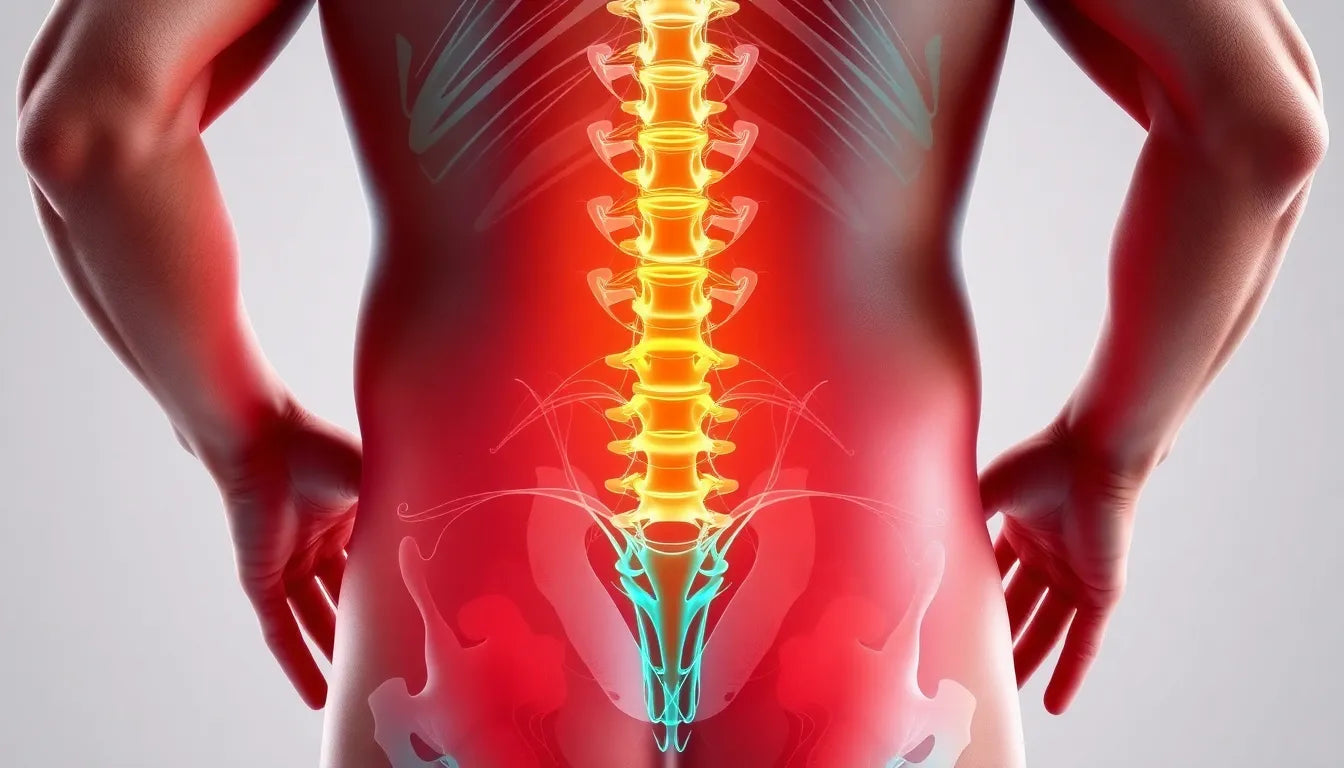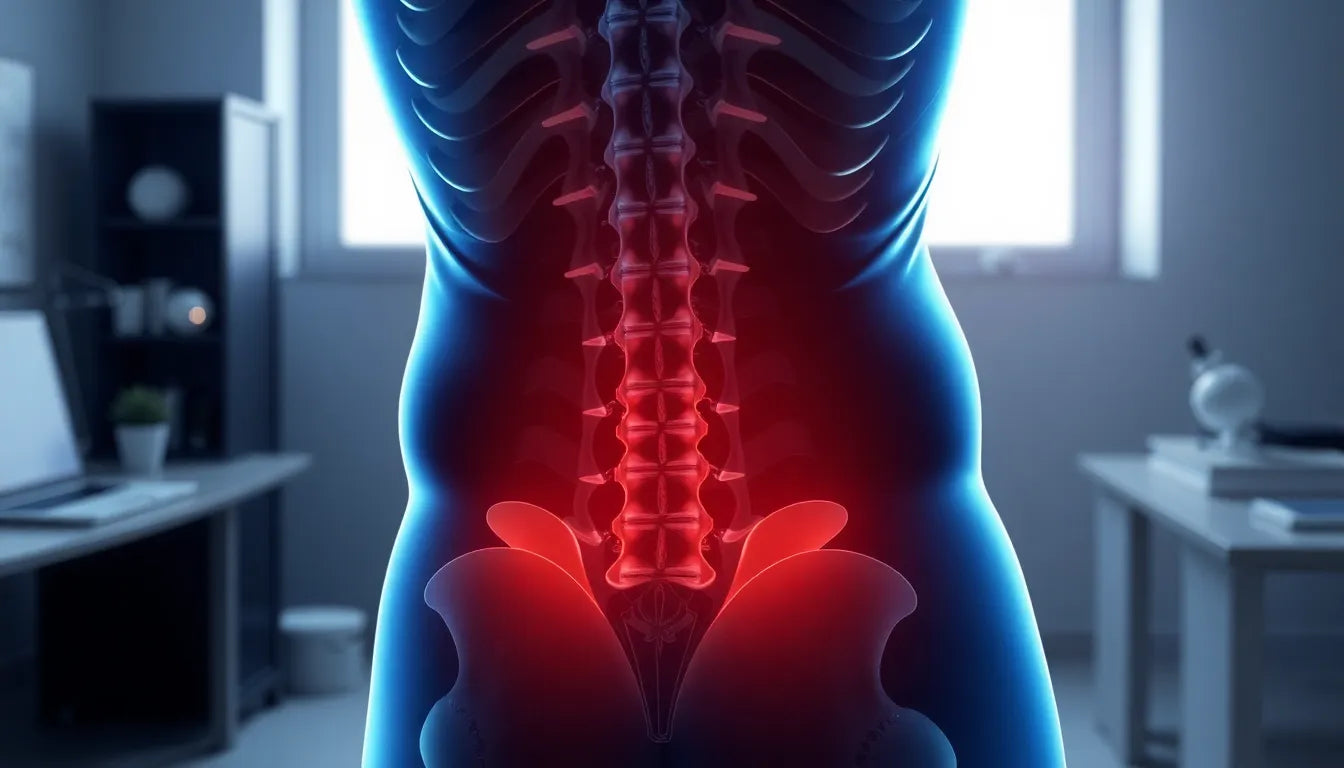When your beloved dog is diagnosed with a herniated disc, it can be an overwhelming experience. Understanding what this condition entails and how it affects your furry friend is the first step toward recovery. A herniated disc occurs when the cushioning discs between the vertebrae in the spine become displaced or ruptured, leading to pressure on the spinal cord. This condition, also known as intervertebral disc disease (IVDD), can cause a range of symptoms, including severe pain, difficulty walking, and even paralysis in severe cases. The impact of these symptoms is not just physical but emotional, affecting both your pet's quality of life and your own peace of mind.
Recognizing the symptoms of a herniated disc in dogs
Dogs with herniated discs often exhibit signs of discomfort and distress. You may notice your dog yelping when picked up, showing reluctance to move, or having difficulty jumping or climbing stairs. In more severe cases, there might be noticeable weakness or paralysis in the hind legs, and your dog may drag its back legs or stumble when walking. These symptoms can vary in intensity, but they all signal the need for immediate veterinary attention to prevent further damage and to initiate appropriate treatment.
The importance of rehabilitation in recovery
Rehabilitation plays a crucial role in the recovery process for dogs with herniated discs, whether the approach is surgical or conservative. The goal of rehabilitation is to restore function, reduce pain, and improve your dog's quality of life. A tailored rehabilitation plan is essential, as it considers the specific needs and condition of your dog, ensuring that the treatment is as effective as possible. Rehabilitation can include a variety of therapies, such as physical therapy, hydrotherapy, and controlled exercise, all designed to aid in recovery and prevent future issues.
By investing in a comprehensive rehabilitation program, you not only enhance the chances of a successful recovery but also provide your dog with the best possible support during this challenging time. Rehabilitation is not a one-size-fits-all solution, and working with veterinary professionals to customize a plan that suits your dog's unique needs is key to unlocking hope and paving the way for a healthier, happier future.
Exploring treatment options for dog herniated disc rehabilitation
When it comes to treating a herniated disc in dogs, the approach can be broadly categorized into conservative and surgical options. The choice between these treatments largely depends on the clinical severity and neurological status of the dog. For cases where the symptoms are mild to moderate, conservative management may be recommended. This typically involves strict rest, pain management, and physical therapy to help alleviate discomfort and support healing. However, in more severe cases, particularly those involving significant neurological deficits or paralysis, surgical intervention may be necessary to relieve pressure on the spinal cord and prevent further damage.
Early intervention plays a critical role in improving outcomes for dogs with herniated discs. Prompt diagnosis and treatment can significantly enhance the chances of recovery, regardless of whether the treatment is surgical or conservative. Veterinary professionals often emphasize the importance of acting quickly to avoid long-term complications and to maximize the potential for a full recovery.
Effective rehabilitation approaches
Rehabilitation is a cornerstone of recovery for dogs with herniated discs, incorporating a variety of physical therapy techniques designed to restore mobility and strength. Techniques such as laser therapy, massage, and range of motion exercises are commonly used to reduce pain and improve flexibility. These therapies are tailored to the individual needs of each dog, ensuring that the rehabilitation plan is both effective and safe.
Hydrotherapy is another valuable tool in the rehabilitation process. The buoyancy of water reduces stress on the joints and spine, allowing dogs to exercise without exacerbating their condition. This form of therapy not only aids in muscle strengthening but also enhances cardiovascular fitness, making it an integral part of many rehabilitation programs. Additionally, muscle stimulation techniques may be employed to encourage muscle contraction and prevent atrophy during periods of limited mobility.
Structured rehabilitation programs for optimal recovery
Creating a structured rehabilitation program is essential for guiding a dog's recovery journey post-surgery. Typically, these programs are designed to evolve over time, adapting to the dog's progress and the severity of the herniation. In the initial weeks following surgery, the focus is often on reducing inflammation and maintaining tissue flexibility through gentle exercises and supportive therapies. As the dog begins to heal, the rehabilitation plan may incorporate more active exercises aimed at rebuilding strength and coordination.
A week-by-week approach allows for a gradual increase in activity levels, ensuring that the dog does not overexert itself and risk further injury. Physiotherapy goals are set at each stage, providing clear milestones for both the dog and its owner. This structured approach not only aids in physical recovery but also boosts the dog's confidence and overall well-being.
Understanding success rates and prognosis
The success rates for dogs undergoing rehabilitation for herniated discs are generally high, especially when treatment is initiated promptly. In mild to moderate cases, recovery rates can be as high as 95%, highlighting the effectiveness of timely and appropriate care. However, the prognosis can vary based on several factors, including the severity of the neurological deficits and the dog's adherence to the rehabilitation plan.
Dogs with severe herniations or those experiencing paralysis may face a more challenging recovery journey. In such cases, surgical intervention followed by an intensive rehabilitation program is often necessary to achieve the best possible outcome. Nonetheless, with dedication and the right support, many dogs can regain significant function and enjoy a good quality of life post-recovery.
Postoperative care and long-term management for dog herniated disc rehabilitation
Once your dog has undergone treatment for a herniated disc, whether surgical or conservative, postoperative care becomes crucial in ensuring a successful recovery. Initiating rehabilitation early is vital to reducing inflammation, maintaining tissue flexibility, and preventing muscle atrophy. Early rehab initiatives might include gentle range of motion exercises and controlled walking to encourage circulation and healing without overexerting your pet.
Monitoring your dog for potential complications is an important aspect of postoperative care. Issues such as pressure sores, bladder control difficulties, and infections can arise, particularly in dogs with limited mobility. Regular veterinary check-ups and attentive home care can help manage these complications effectively. In some cases, your veterinarian might recommend specific interventions, such as medications or additional therapies, to address these challenges.
For dogs facing long-term mobility issues, long-term support strategies are essential. This might involve the use of wheelchairs or harnesses to aid mobility and prevent further injury. Additionally, adapting your home environment to accommodate your dog's needs—such as using ramps instead of stairs and providing non-slip surfaces—can significantly enhance their quality of life.
Frequently Asked Questions
What are the first signs of a herniated disc in dogs?
Early signs of a herniated disc in dogs often include reluctance to move, yelping in pain when touched, and difficulty performing normal activities like jumping or climbing stairs. In severe cases, you may notice your dog dragging its limbs or showing signs of paralysis. If you observe any of these symptoms, seek veterinary attention immediately.
How long does rehabilitation take for a herniated disc in dogs?
The duration of rehabilitation for a herniated disc in dogs can vary widely, ranging from weeks to several months. The recovery time depends on factors such as the severity of the herniation, the treatment approach taken, and the dog's response to rehabilitation efforts.
Can a dog fully recover from a herniated disc?
Many dogs can achieve full recovery from a herniated disc, especially with early intervention and a comprehensive rehabilitation plan. However, the likelihood of complete recovery is influenced by the severity of the condition and the promptness of treatment.
What home exercises can I do to help my dog recover?
Home exercises play a supportive role in your dog's recovery. Under veterinary guidance, you can perform passive range of motion exercises to maintain joint flexibility and gentle massages to improve circulation. Controlled walks and hydrotherapy, if feasible, can also aid in strengthening muscles and enhancing mobility.
Sources
- Southeast Veterinary Neurology. "Understanding and Treating Intervertebral Disc Disease in Dogs."
- PDSA. "IVDD in Dogs: Symptoms and Treatment Options."
- Berkeley Dog & Cat Hospital. "Surgical and Non-Surgical Treatments for Dog Herniated Discs."
- Fitzpatrick Referrals. "Rehabilitation Programs for Dogs Post-IVDD Surgery."
- The Rehab Vet. "Conservative vs. Surgical Management of IVDD in Dogs."
- Small Animal Center Arndt. "Decision-Making for Surgical Options in Dog Disc Herniation."
- BluePearl Vet. "Case Study: Recovery from Acute Herniated Disc in Dogs."


















